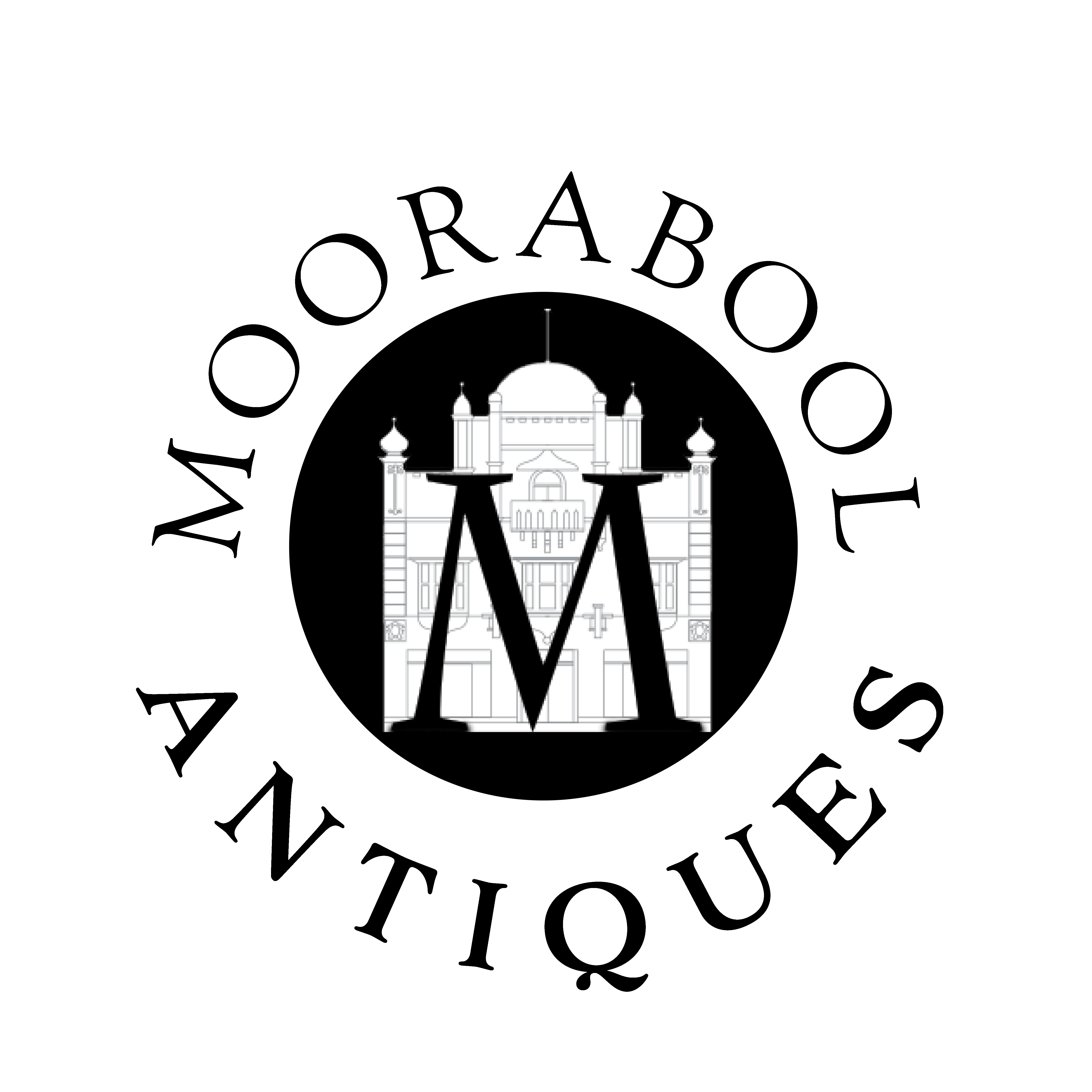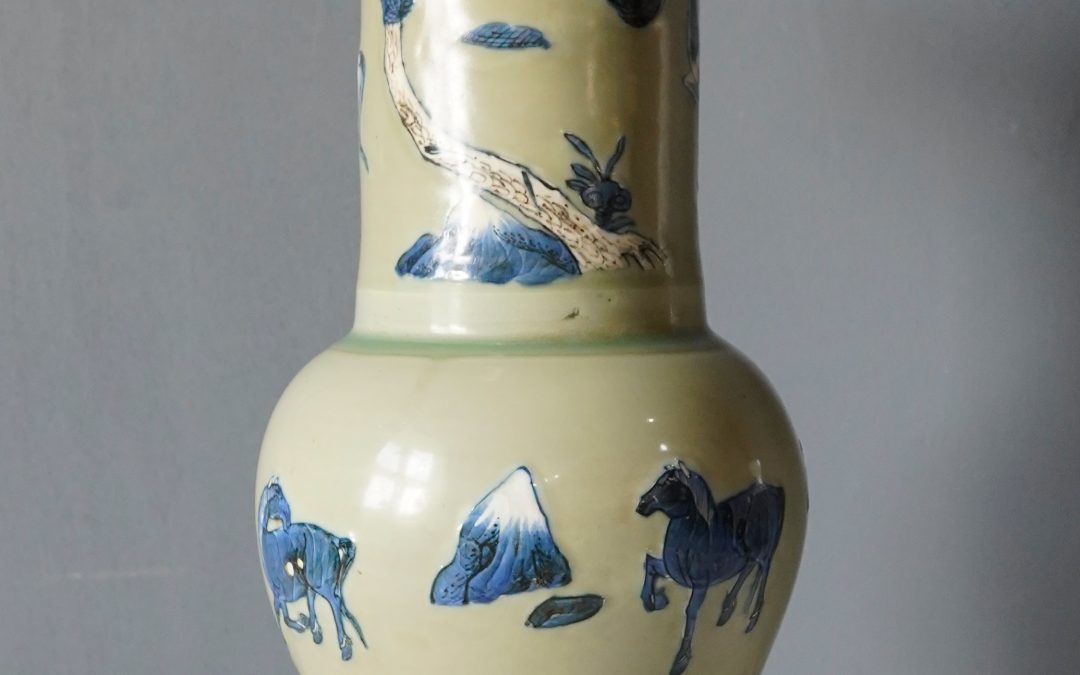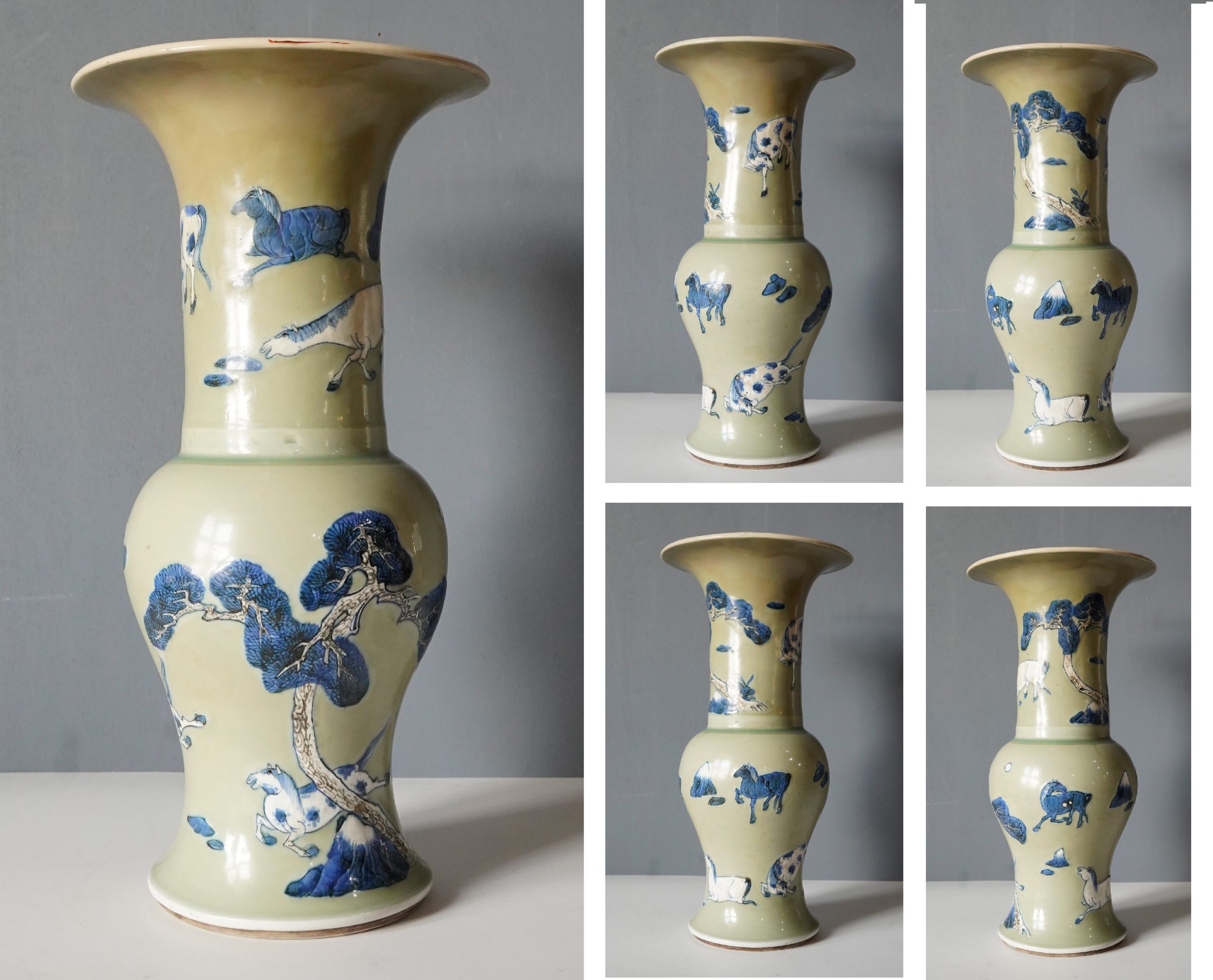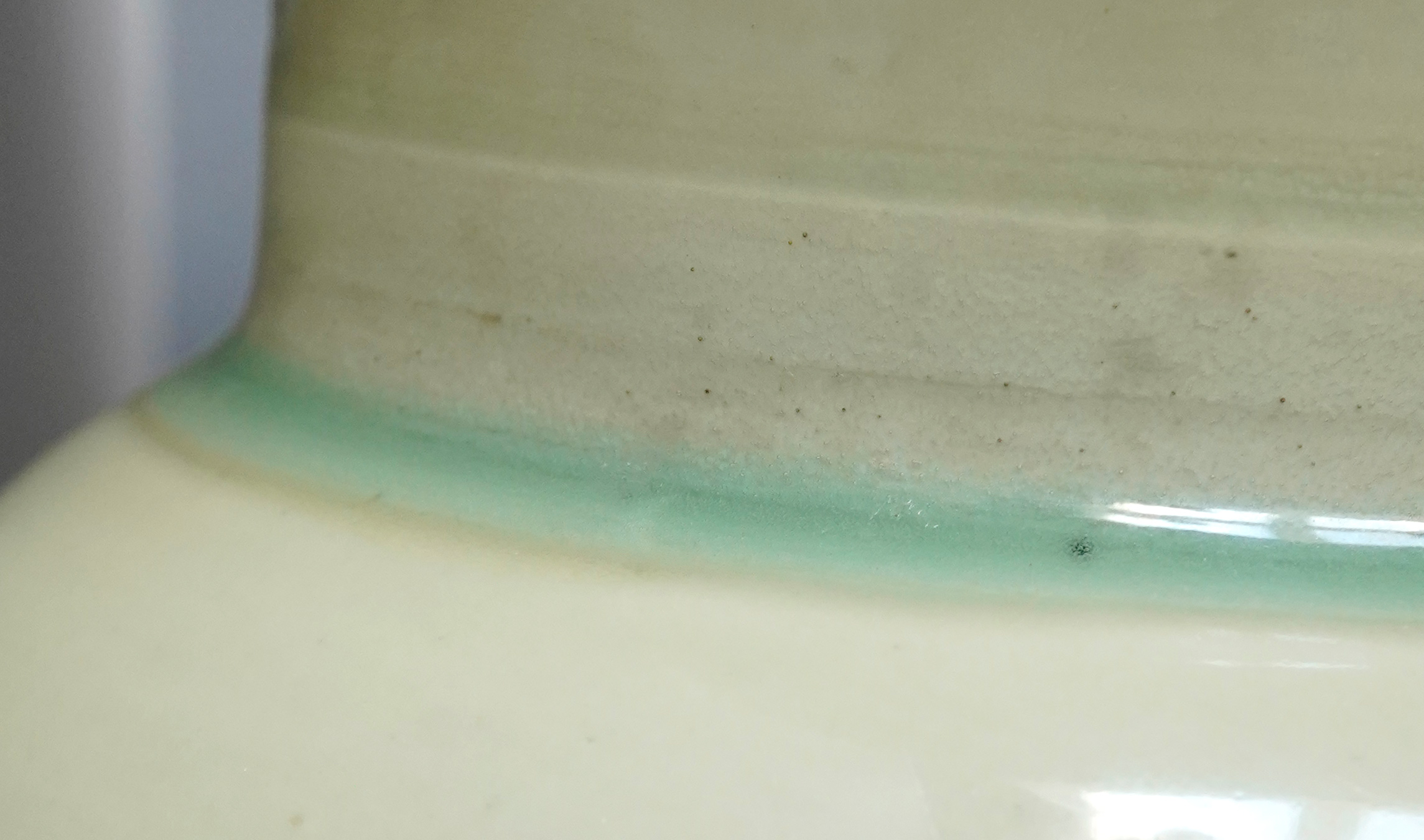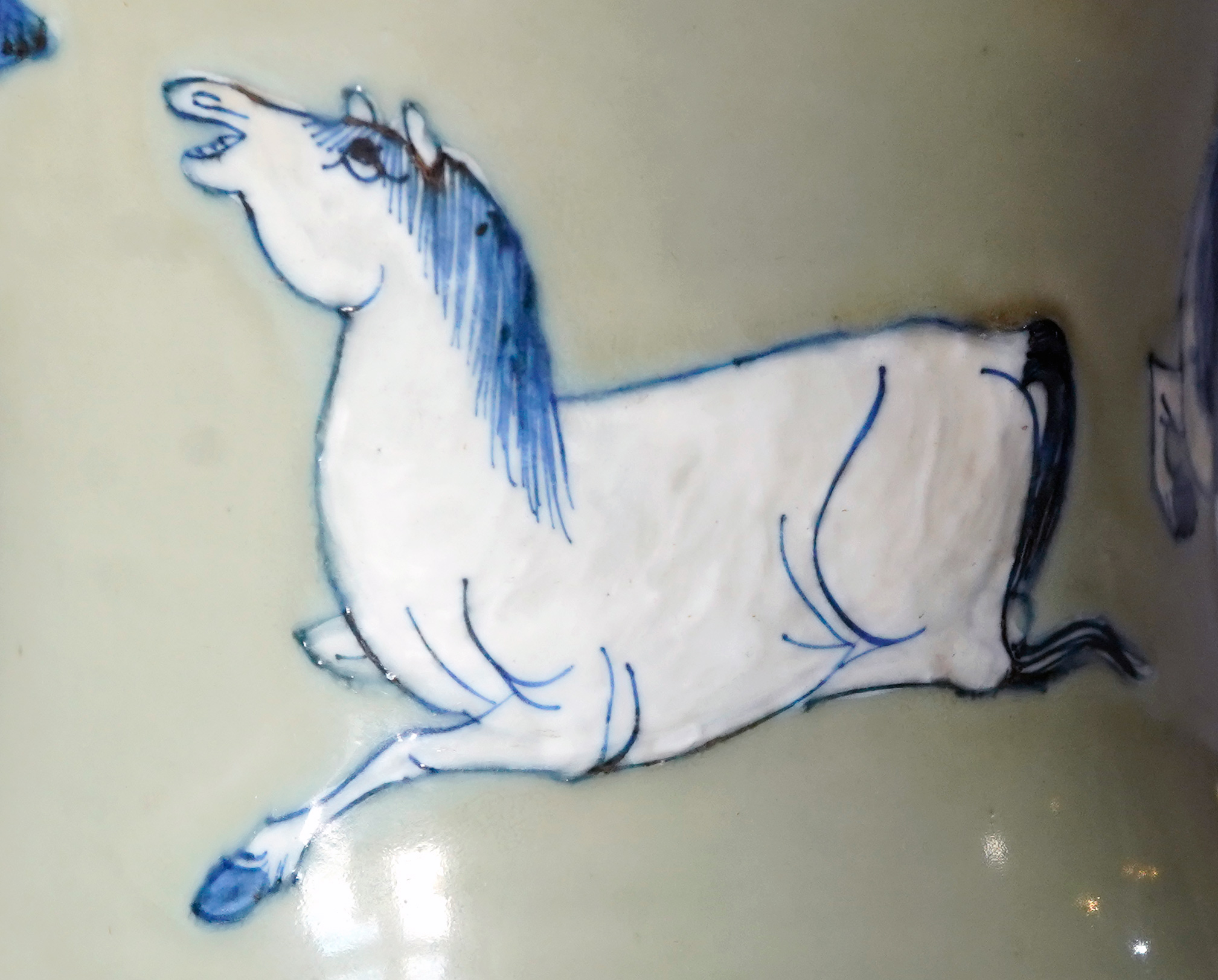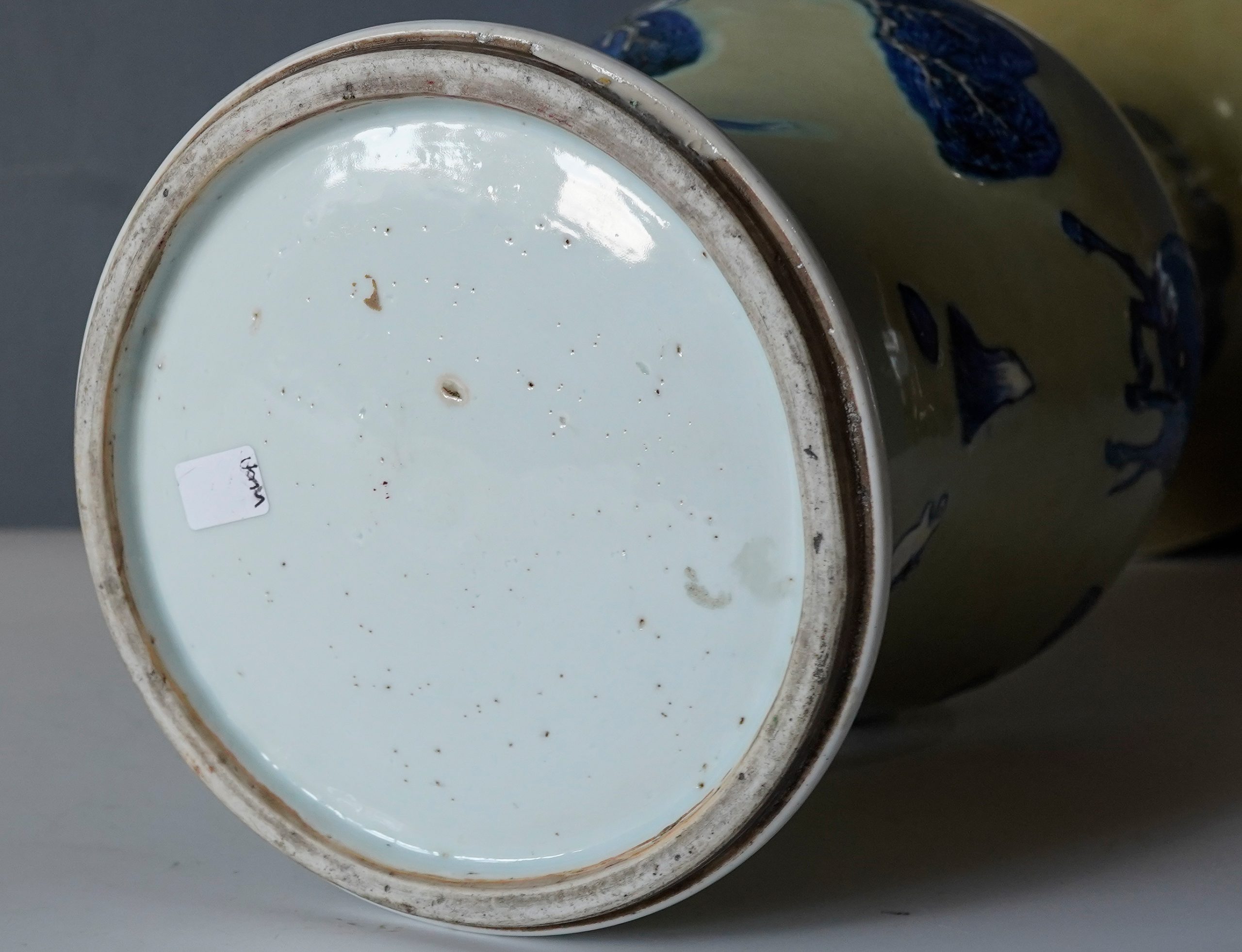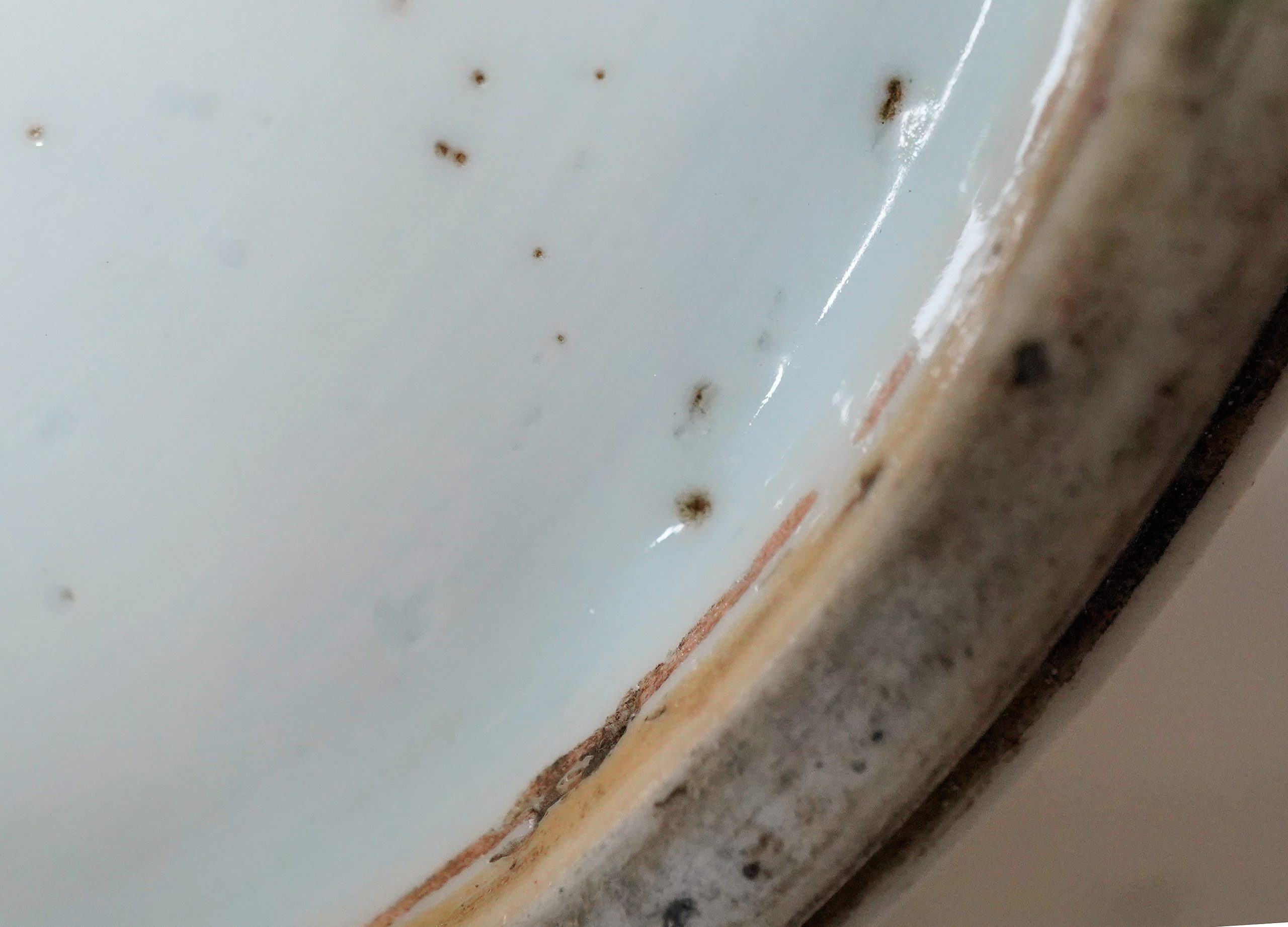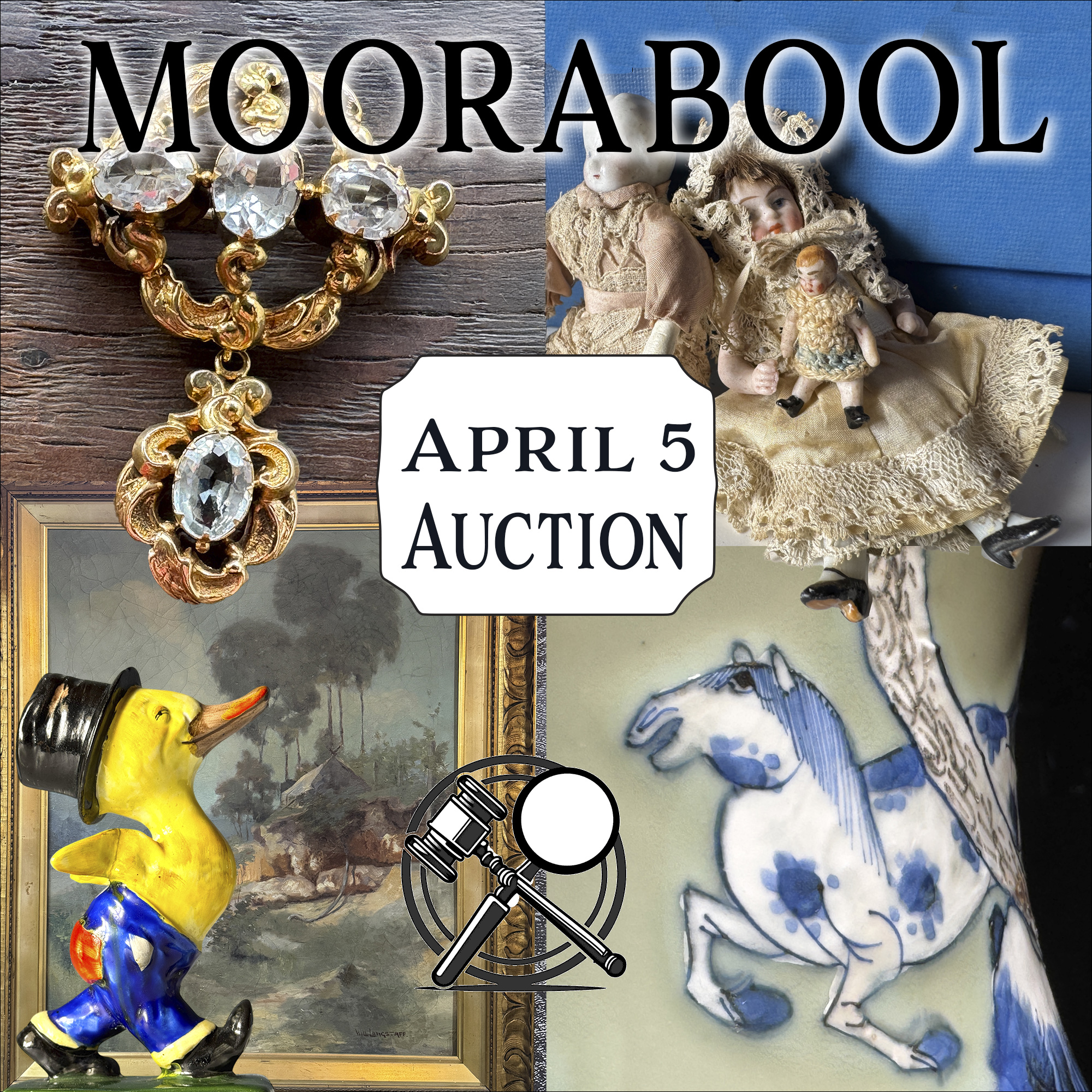A rare Chinese Celadon vase, painted with the 'Eight Horses of Muwang', Kanxi period, 1644-1722
This fine piece of Chinese porcelain is to be offered by Moorabool Auctions on Saturday 5th April, 2025.
44.5cm high, rim 23cm wide
This splendid large vase is a form known as a ‘Yen-Yen’, or a Phoenix-tail or fengweizun .
It was made in two pieces, joined in the center at right-angles. This area has collected the green of the celadon glaze, leaving a distinct green stripe. Such a technique is typical of the earlier examples, from the Kanxi period (1644-1722). As there are many later Qing Dynasty & 20th century examples on the market, this is one of the indications this is genuine: the base is also of the right profile, with all the small pits & slight reddish tone of iron in the clay clumping in the unglazedd areas.

The Eight Horses of Muwang refers to a famous legend in Chinese culture, associated with King Mu of Zhou (Muwang), a ruler of the Zhou Dynasty (976–922 BCE). According to mythology, King Mu was an adventurous and ambitious monarch who longed to explore the western regions of his empire and beyond.
The Legend of the Eight Horses
King Mu was said to possess eight extraordinary horses, each with unique abilities, which allowed him to travel great distances. These horses helped him on his legendary journey to meet the Queen Mother of the West (Xiwangmu), a powerful goddess residing in the Kunlun Mountains.
Each horse was said to have supernatural traits, such as:
-
Flying across vast distances
-
Running without touching the ground
-
Moving as fast as the wind
-
Crossing rivers without sinking
-
Climbing mountains effortlessly
-
Glowing in the dark
-
Having immense endurance
-
Possessing divine intelligence

King Mu’s journey with these eight horses symbolized his ambition to achieve immortality and explore the unknown. The tale is recorded in ancient texts such as the Liezi and Shiji, blending history with myth.
Provenance is always good to have for pieces like this, and while this example has emerged from a local collection without previous documentation, the owner purchased it in the UK in the 1960’s, shortly before migrating to Australia.

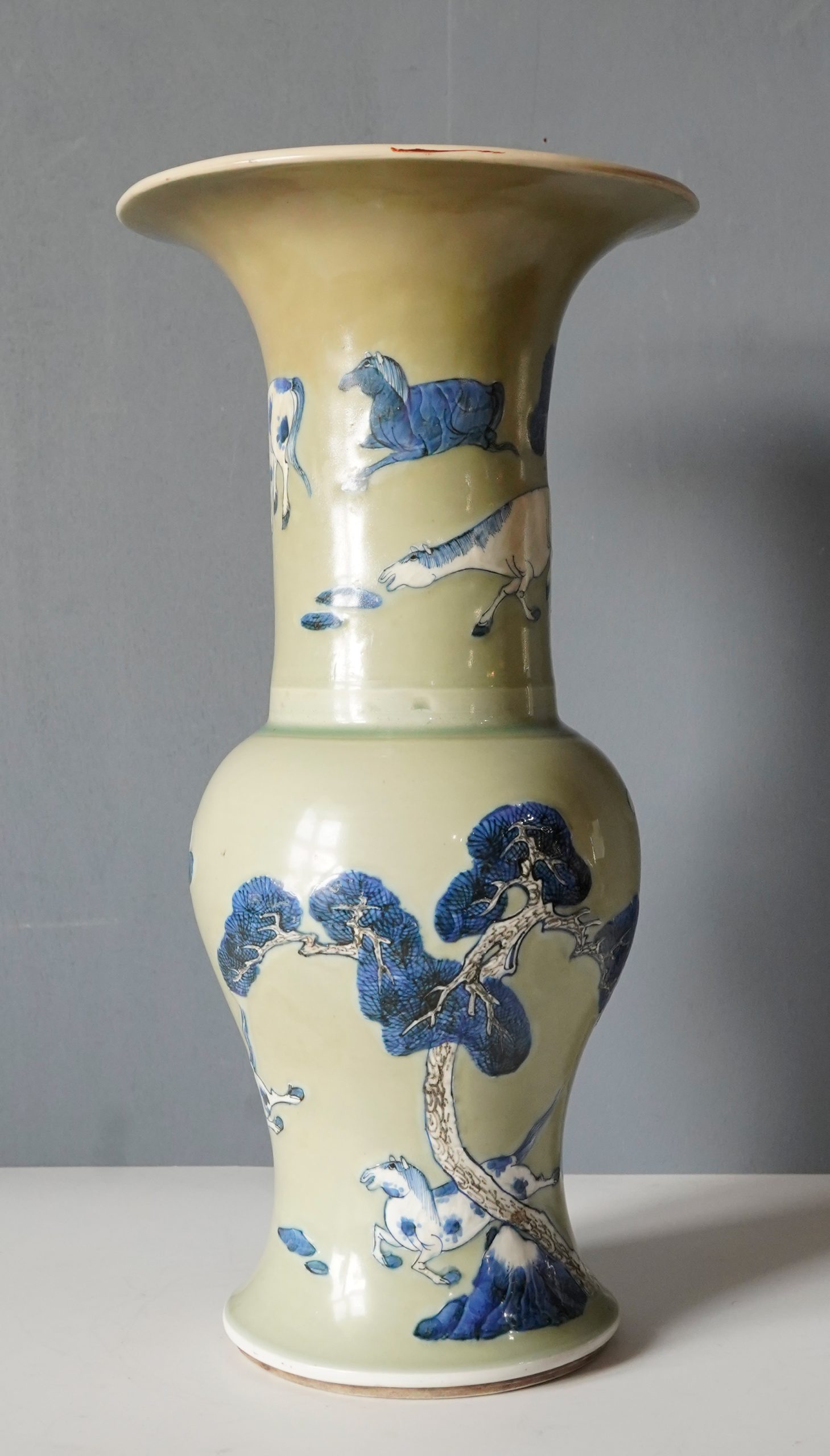
The decoration is remarkable, with a celadon glaze decorated with opaque white enamel features painted thickly onto this glaze surface. This example has some blisters to one blue-painted horse, giving a good side profile of the decoration and an insight into the decoration technique. The white enamel areas were painted with cobalt blue – usually used ‘underglaze’, ie beneath a clear glaze. The other colour is rarely seen ‘copper red’, another underglaze colour that could withstand high temperatures. As these colours would burn dark without a covering glaze, there is evidence of a clear glaze over the top of these decorative areas. Interestingly, the use of copper red on the tree-trunks has burnt to a dark brownish colour, and blistered dark where it has been exposed. Only small areas have the usual red tones.

